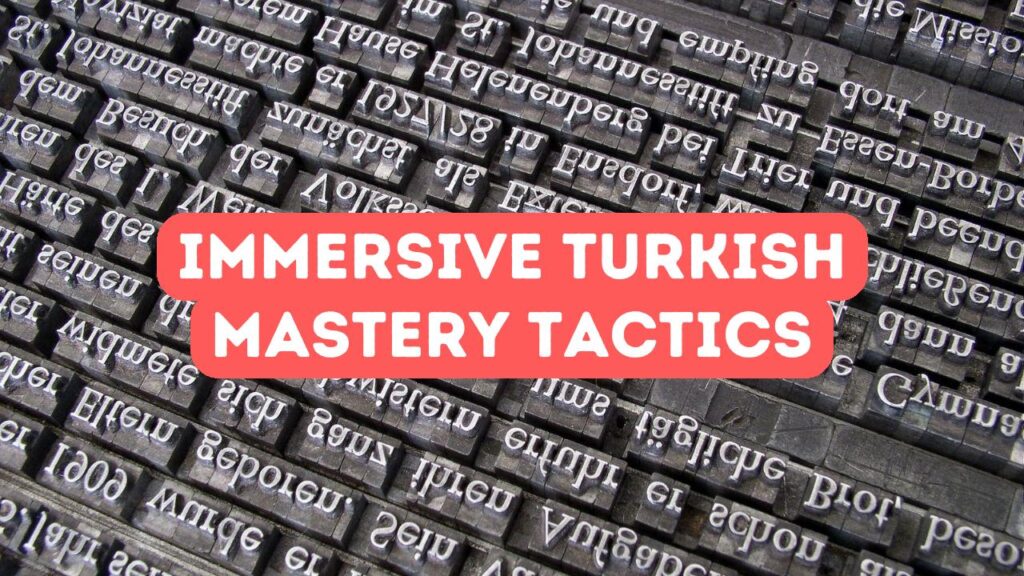Enhancing Linguistic Structure: A Comprehensive Guide
Embarking on the journey to enhance linguistic structure in Turkish writing entails a meticulous approach to the language’s unique characteristics, which includes an emphasis on agglutination and vowel harmony. Developing a comprehensive understanding of these foundational principles is pivotal for learners as it affects both word formation and sentence construction. As students delve into the depths of Turkish grammar, they must systematically study its extensive inflectional endings and their implications on meaning. Mastery of these grammatical nuances enables writers to convey their messages with precision, ensuring that each suffix added to a root word intricately refines the text’s intent. To aid in this quest, a variety of resources such as grammar guides, exercises, and constructive feedback from native speakers can serve as invaluable tools for the learner to structure their sentences not just correctly, but with the authentic flow that characterizes proficient Turkish prose.
Building upon this grammatical bedrock, enriching one’s vocabulary is the next critical step in the evolution of Turkish writing proficiency. An expansive lexicon allows for the selection of the most appropriate words to express subtle shades of meaning and emotional nuance. Students should immerse themselves in a wide range of texts, from contemporary news articles to the poetic verses of classical Ottoman literature, thus absorbing the diversity of vocabulary employed across different genres and periods. Incorporating these new words into daily practice, perhaps by composing original sentences or engaging in creative writing exercises, cements this knowledge and assists in the transition from theoretical understanding to practical application. Ultimately, a rich vocabulary not only serves to enable a more nuanced expression but also reflects a writer’s personal style and voice, which is the hallmark of true writing mastery in any language.
Delving beyond grammar and vocabulary, achieving fluency in Turkish writing demands a discerning appreciation of stylistic elements and rhetorical devices. As language learners polish their prose, attention to narrative flow, tone, and the use of idiomatic expressions becomes paramount. Engaging with a broad spectrum of authentic materials, such as editorial columns, novels, and essays, provides insights into the seamless integration of cultural references and metaphorical language, which are the lifeblood of engaging texts. Developing writing proficiency also involves cultivating the ability to argue a point convincingly, to narrate compellingly, and to describe vividly, all of which hinge on the strategic employment of language. This holistic approach to the craft of writing not only nurtures a learner’s ability to produce sophisticated texts but also instills a deep-seated appreciation for the nuances and beauty of the Turkish language, culminating in a literary eloquence that resonates with readers and preserves the cultural vibrancy of the Turkish tradition.
Nurturing Advanced Expression: Strategies and Insights
Advancing in Turkish writing proficiency demands more than rote memorization of rules and vocabulary; it requires the nurturing of advanced expressive capabilities. As learners move beyond the basics, they should actively engage with a diverse array of sophisticated texts—literary works, opinion pieces, academic essays, and more—to cultivate an intuitive sense of the language’s rhythm and structure. Delving into these materials with a critical eye, students can dissect intricate sentences, embrace the art of subtlety and inference, and appreciate the aesthetic dimensions of Turkish prose. By consistently challenging themselves with such complex content, expanding their lexical repertoire, and synthesizing linguistic constructs, they not only sharpen their comprehension skills but also pave the way for the emergence of their own refined and nuanced writing style.
Building upon this deepened exposure to Turkish texts, learners should practice expressing their own thoughts and arguments in writing. This step involves deliberate efforts in drafting, revising, and seeking feedback, focusing on both form and content. To nurture advanced expression, writing exercises should emphasize creativity and critical thinking, pushing students to use Turkish in novel, challenging ways. They may, for instance, attempt to mimic the styles of different Turkish authors or experiment with various genres and tones, from satirical articles to heartfelt poetry. Peer review sessions and discussions with native speakers can provide invaluable insights into the nuances of idiomatic expressions and the cultural connotations of certain phrases. Through persistent practice and an openness to constructive criticism, learners will begin to notice a more authentic and flexible use of Turkish in their writing, signaling a transition from theoretical understanding to practical, evocative application.
At the zenith of Turkish writing proficiency, learners find themselves not merely as students of the language, but as artisans of words, capable of producing texts that resonate with emotional depth and intellectual rigor. It is at this stage that the cultivation of a personal voice becomes paramount; writers should actively seek topics that ignite their passion, allowing their prose to be imbued with individuality and distinct perspective. Collaborations with Turkish authors, participation in writing workshops, and contributions to Turkish publications can serve as catalysts for this level of expressive maturity. Moreover, embracing the rich and layered nuances of Turkish cultural references enhances the relevance and depth of their writing. Such relentless pursuit of excellence in self-expression, underpinned by a profound grasp of the language’s subtleties, enables the writer to flourish, creating texts that not only communicate effectively but also contribute meaningfully to the Turkish literary canon.
Mastery in Turkish Composition: Techniques for Eloquent Writing
To attain mastery in Turkish composition, one must hone their skills through a series of techniques that facilitate eloquent writing. The crux of eloquence in Turkish lies in the seamless integration of a robust lexicon and a deep understanding of grammatical structures. This synthesis allows for the expression of complex ideas with elegance and precision. Foremost, language learners should immerse themselves in a wealth of reading material—ranging from newspapers and essays to poetry and novels—assimilating diverse styles and registers. Additionally, practicing structured compositions can bolster one’s ability to construct coherent arguments and narratives. It is also critical to develop an ear for the rhythm and flow of the language, enabling the writer to employ various sentence structures that capture the reader’s interest. Through these practices, learners can begin to craft texts that not only convey messages but also resonate with the beauty and intricacy of the Turkish language.
Building upon this literary foundation, learners must actively engage with advanced composition techniques. Delving into the subtleties of Turkish idiom and metaphor, students can enrich their writing with culturally resonant expressions that breathe life into their texts. Peer review plays a pivotal role in this phase, as constructive feedback sharpens writing skills and encourages a critical eye for detail. Crafting a narrative that captivates requires not just grammatical accuracy, but also an intuitive sense of pacing and drama, which can be cultivated through the analysis of prominent Turkish writers’ works. Moreover, leveraging the power of revision, aspiring writers learn to refine their drafts iteratively, each time enhancing the clarity and stylistic elegance. Making strides in these areas ensures that the writer’s prose is not only technically proficient but also carries the nuance and depth characteristic of advanced Turkish composition.
As learners aspire to the echelons of Turkish writing mastery, they should integrate the nuanced art of rhetorical devices and register adaptation, ensuring their writing resonates within specific contexts and audiences. Perfecting the craft involves a delicate balance between innovation and adherence to the norms of Turkish literary style, punctuating prose with idiomatic flair and regional color when appropriate. The ultimate goal is to foster a distinct voice that is both authentic to the learner and reflective of Turkish linguistic traditions. This level of proficiency does not come overnight but is the fruit of persistent refinement and dedicated exploration of the language’s expressive potential. In this stage, nuances such as alliteration, assonance, and the strategic use of connotation lend texts a distinguished quality that distinguishes proficient writers. With these elements in unison, the writer becomes a true artisan of the word, capable of weaving Turkish prose with a richness that does justice to the complexities and beauty of the language itself.







